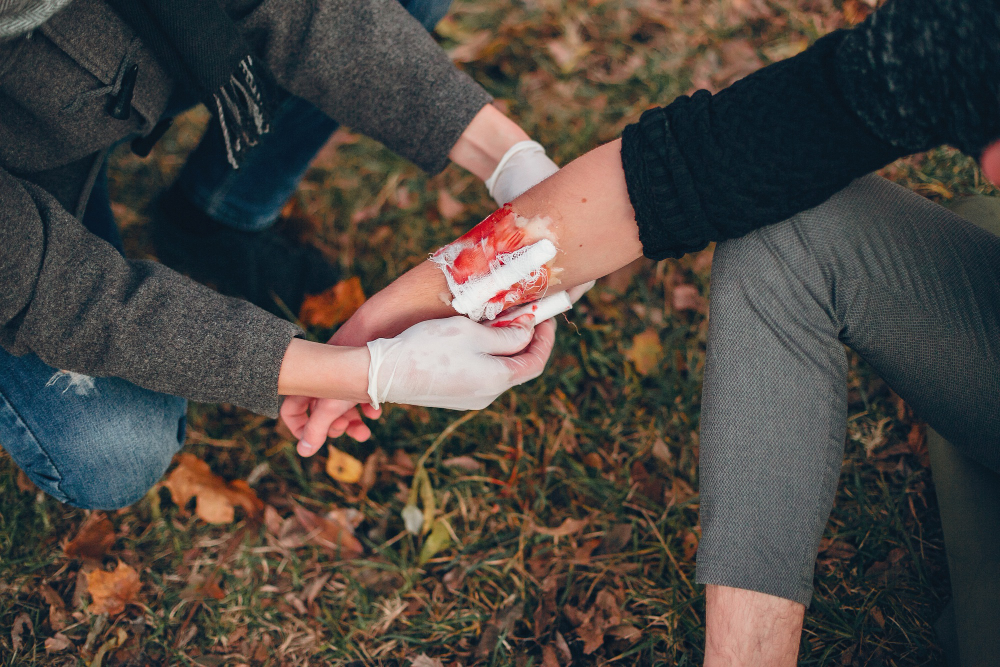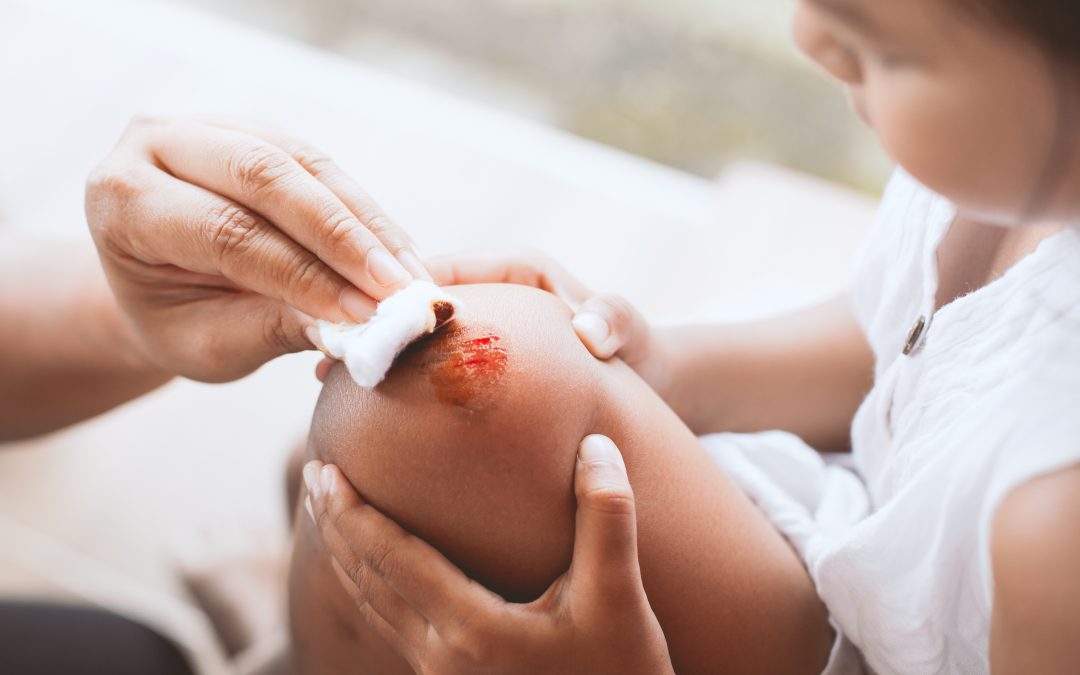A puncture wound is a minor but deep injury caused by sharp objects like nails, glass, or needles. These injuries are common in Naperville due to outdoor work, sports, and DIY accidents. Unlike cuts or scrapes, a puncture can penetrate deeply into the skin and trap harmful bacteria.
Prompt attention and proper wound care are crucial to prevent complications such as infection or tetanus. Understanding the healing stages of a wound helps you recognize what’s normal and when to seek medical attention.
Stage 1: Bleeding and Clot Formation
As soon as you’re injured, your body starts the healing process. Blood flows to clean the wound, and a clot forms to stop bleeding.
This natural response helps seal the opening and protect deeper tissue from bacteria. If the bleeding continues or the object is rusty,
Visit First Choice Medical for professional help. You might need a tetanus vaccination to prevent infection, especially if your last shot was years ago.
Stage 2: Inflammation and Swelling
Within 24–48 hours, the wound may look swollen and red and feel warm. This means your immune system is working. However, pus, spreading redness, or sharp pain can be signs of an infection.
It’s essential to recognize the signs of infection after stepping on a nail early so it doesn’t spread into the surrounding tissue.
Stage 3: Tissue Growth and Repair
This phase starts 3 to 5 days after the injury. New tissue begins to grow and fill the wound. A scab may form as the skin rebuilds itself. It is a good sign that your body is repairing the damage.
If you have stitches, it’s helpful to know how wound stitches dissolve and how to relieve pain from wound stitches to stay comfortable and heal safely.
Stage 4: Scar Formation and Full Recovery
As healing finishes, the new skin toughens. A scar may form and change over time. This stage can last anywhere from a few days to a few weeks, depending on the severity of the injury.
Keep an eye out for ongoing pain or changes in color, which may point to a hidden infection. Understanding the risks of wound stitches can also guide your recovery.
Fast Treatment Is Key in Naperville
Puncture wounds may appear small but can cause significant damage. Quick treatment reduces the risk of infection, accelerates healing, and helps prevent long-term complications.1st ChoiceMed in Naperville offers walk-in care for wounds.
Whether you need stitches, tetanus shots, or an X-ray to check for foreign objects, their team is ready to help. If you’re unsure whether your wound needs urgent attention, reading about what makes same-day medical attention essential can help you decide.
- Reduces the risk of infection by addressing the wound before bacteria spread
- Prevents deeper complications, such as abscesses or bone involvement
- Limits pain and swelling through early medical cleaning and protection
- Improves healing speed with timely wound care and possible stitching
- Avoids emergency room delays by using walk-in urgent care clinics like 1st ChoiceMed
- Enables faster return to daily activities, school, or work
When Is a Puncture Wound Considered Serious?
A puncture wound is considered severe when it penetrates deeply, is caused by a dirty or rusty object, or exhibits signs of infection. Some injuries might appear harmless but silently damage tissues or carry bacteria.
1. Wounds That Bleed Heavily
If a puncture wound continues to bleed after applying pressure, you may have hit a blood vessel. It requires immediate medical care.
2. Pain That Gets Worse Over Time
Pain that increases rather than fades after the first 48 hours may indicate a deep infection or inflammation.

Never Ignore Mild Symptoms
Even if a puncture wound looks minor, ignoring mild symptoms like slight swelling, redness, or soreness can lead to serious complications.
These early signs may seem harmless, but they often indicate that the body is trying to fight off bacteria trapped deep under the skin.
Without proper care, what starts as a simple prick can turn into an infection, abscess, or even systemic illness. In some cases, wounds that are not initially painful can develop hidden infections that spread silently.
That’s why any symptom—no matter how small—should be watched closely. Seeking early treatment from a local urgent care provider in Naperville could prevent days or weeks of delayed healing and potential long-term damage.
1. Slow Healing Could Signal Trouble
If the wound hasn’t improved after several days, it may be infected beneath the skin.
2. Over-the-Counter Care Isn’t Always Enough
While basic cleaning helps, it may not be sufficient for deep or contaminated wounds.
Naperville Urgent Care Supports
When it comes to puncture wounds, fast and professional care can make all the difference. Urgent care centers in Naperville, such as 1st ChoiceMed, offer immediate access to wound cleaning, evaluation, and treatment without the long wait times associated with an emergency room.
Their trained providers can assess how deep the wound is, clean it properly, and decide if stitches, a tetanus shot, or X-rays are needed. They also guide you on caring for the wound at home and on monitoring it for signs of infection.
By addressing the injury early, they help prevent complications like swelling, pain, or abscess formation. With walk-in access and on-site services, urgent care enables patients in Naperville to begin healing faster and more safely—all under expert medical supervision.
1. Access to X-Rays and Lab Tests
If needed, your provider can recommend an X-ray to ensure no foreign object remains inside.
2. On-Site Tetanus Vaccination
You can receive a tetanus booster shot on-site, which helps prevent serious infections from spreading.
Complications That Can Arise Without Care
Ignoring a puncture wound or delaying treatment can lead to serious health complications. What starts as a minor injury may turn into a deep tissue infection, especially if the object that caused it was dirty or rusty.
Bacteria can travel beneath the skin and form an abscess, a painful collection of pus that often requires drainage. In some cases, the infection can spread into the bloodstream or even reach the bone, leading to conditions like cellulitis or osteomyelitis.
Without care, you also risk tetanus—a disease that affects the nervous system and can be life-threatening.
Abscess Formation
Pockets of pus, or abscesses, may form deep under the skin and require drainage or antibiotics.
Cellulitis or Bone Infections
Serious infections, such as cellulitis or bone infections, may develop silently. These need professional treatment immediately.
Monitoring Your Wound at Home
If your puncture wound is small and shallow, you may be able to care for it at home—but only with proper attention. Monitoring the wound daily helps you catch signs of infection before they worsen.
The first few days are critical. Look for any changes in color, swelling, pain level, or discharge. If anything seems unusual, it’s best to visit urgent care right away. Early action can prevent serious complications and support faster healing. Use these tips to stay on track during recovery:
- Track your symptoms—if pain increases or new symptoms develop, seek medical help quickly.
- Clean the wound daily with mild soap and water—avoid using alcohol or hydrogen peroxide, as these can delay healing.
- Keep it dry and covered with a clean bandage to protect from dirt, friction, and bacteria.
- Watch for signs of infection such as increased redness, swelling, yellow discharge, or a foul smell.
More Information:
what-makes-same-day-medical-attention-essential-for-managing-health-outcomes
can-a-puncture-wound-cause-systemic-infection-recognizing-the-red-flags
what-are-the-risks-of-wound-stitches
Medical Source
journals.aai.org/jimmunol/article/169/3/1293/34919
FAQs
What is a puncture wound?
A deep, narrow injury caused by sharp objects like nails or pins. It may not bleed much, but it can go deep under the skin.
How long does it take for a puncture wound to heal?
Minor wounds usually heal in 7–10 days. Deep or infected wounds may take longer to heal.
When should I worry about infection?
Watch for signs of infection, including pus, redness, swelling, warmth, or red streaks extending away from the wound.
Do I need a tetanus shot?
Yes, especially if the object was dirty or rusty, and your last shot was more than 5 years ago.
Can I clean a puncture wound at home?
You can rinse it gently, but if the pain persists or is severe, seek medical attention.
Do I need stitches?
If the wound is deep, gaping, or won’t stop bleeding, you may need stitches.
Should I cover a healing wound?
Yes, keep it clean and lightly covered to avoid dirt and bacteria.
Is pain normal after getting stitches?
Mild discomfort is common. Use gentle cleaning and protect the area as it heals.
Can I shower with a puncture wound?
Yes, but avoid soaking it. Pat it dry afterward and re-cover if needed.
Where can I find treatment in Naperville?
Visit 1st ChoiceMed’s Naperville walk-in clinic for fast, expert wound care.

